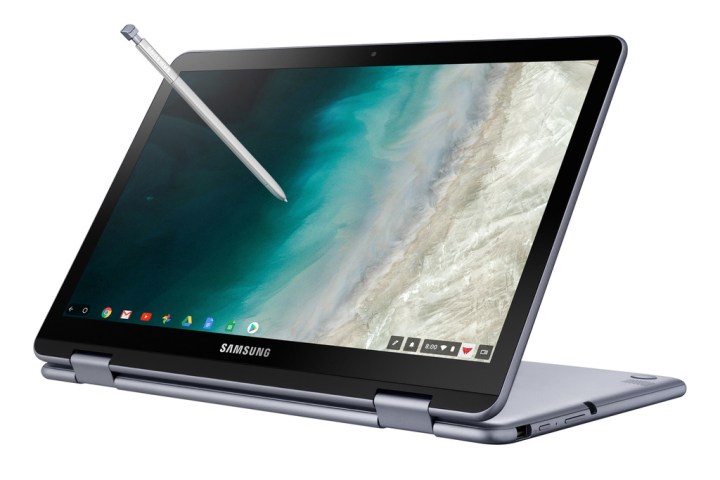
Rumors have long hinted that Always-Connected Chromebooks were in the works, and Samsung put things to rest on Friday, October 12, by revealing the LTE connected Chromebook Plus V2. Available on November 2 for $600, this 2-in-1 addresses the need Chromebook owners have shown for staying connected, no matter where they are located.
Per Samsung, the specs and design on the new Chromebook Plus V2 have otherwise unchanged from the Wi-Fi version. For the price, you’re still getting a 12.2-inch IPS display, a Celeron 3965Y processor, 4GB of RAM, and 32GB of eMMC storage. Specs aside, the device is more about showcasing Samsung’s partnership with Google to bring an Always-On Chromebook to the market.
“We built Chrome OS to provide faster, simpler and more secure computing for everyone. With the Samsung Chromebook Plus V2 (LTE), users have one device they can use for work and play, wherever they are,” Kan Liu, Senior Director of Product, Chrome OS, said in a statement.
Along with Google, Samsung also partnered with Intel to deliver the Chromebook Plus V2. Considering Microsoft has been working with Qualcomm on similar Windows 10 Always Connected PCs, that is a rather interesting feat that brings some more competition to the market.
“People demand their devices match their level of always-on performance in order to achieve, contribute and be their best … Samsung’s new Chromebook Plus V2 (LTE) device meets this expectation with style by fusing Samsung design ingenuity and Google’s beloved OS with Intel processors and Intel LTE connectivity,” Josh Newman, general manager of Mobile PC Segments, Intel Client Computing Group, said in a statement.
We reviewed the Samsung Chromebook Plus V2 a few days ago, finding that it fails to live up to the Chromebook Pro. Still, the Samsung device features a solid metal and plastic build quality, all-day battery life, and a very good display for any productivity and media needs.
With the new addition of LTE, the Samsung Chromebook Plus V2 should now more enticing for consumers who just want a device for travel and enjoying the internet wherever they go. Considering that even Google’s new Pixel Slate doesn’t have LTE, it will be interesting to see if other Chromebook manufacturers will later follow to come onboard with the “Always-On” platform.
Editors' Recommendations
- Samsung’s Galaxy Chromebook 2 360 looks solid for just $430
- You can now buy the Samsung Galaxy Chromebook 2 with a pre-order discount
- Mobvoi brings sleep tracking to the TicWatch Pro and TicWatch Pro 4G/LTE
- Launch day: The Samsung Galaxy Note 10, Note 10 Plus, and the 5G model are here
- Mobvoi’s new TicWatch Pro 4G/LTE smartwatch lasts 2 to 30 days with a catch


